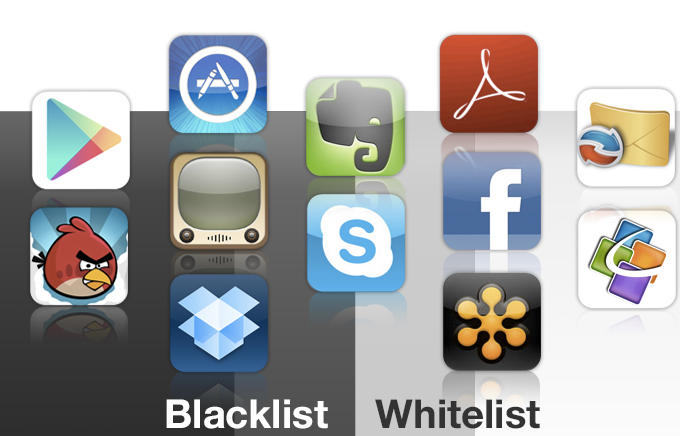
The era of Bring Your Own Device (BYOD) is here. The question now is: How can companies actually profit from mobile devices?
[aditude-amp id="flyingcarpet" targeting='{"env":"staging","page_type":"article","post_id":573256,"post_type":"guest","post_chan":"none","tags":null,"ai":false,"category":"none","all_categories":"cloud,enterprise,mobile,","session":"B"}']Three-quarters of companies allow employees to use personal devices at work and Gartner predicts that number will rise to 90% by 2014. Forward-thinking businesses are starting to see that the devices they once considered a liability can actually be assets that have the potential to increase productivity, and grow top-line opportunities.
With this article, I’m releasing a study (see below) that highlights key enterprise mobility trends, based on the latest stats from Zenprise’s mobile device management solution, Zencloud. Here’s a summary of our key findings for the latest quarter, ending Sept 30:
AI Weekly
The must-read newsletter for AI and Big Data industry written by Khari Johnson, Kyle Wiggers, and Seth Colaner.
Included with VentureBeat Insider and VentureBeat VIP memberships.
- iPads lead the BYOD movement – and are driving mobile enterprise management market growth. iOS is winning the platform war, and the iPad makes up 57 percent of deployed iOS devices in Zencloud.
- Although iOS leads, Android is dominating in certain vertical industries — namely transportation, healthcare, utilities and telco.
- Mobile management is moving to apps and content, not just devices. Organizations whitelisted 50 percent and blacklisted 39 percent more apps than last quarter. Adobe Reader, Evernote, NitroDesk TouchDown, QuickOffice, Lookup, and Citrix GoToMeeting are among the most whitelisted apps. Skype and Dropbox are two of the most blacklisted. Facebook was often in the “undecided” list (where customers both blacklisted and whitelisted)
- GPS policies grew more than 60 percent.
So what’s driving all of this? Well, with mobile devices in hand, workers are setting the stage for the second generation of enterprise mobility — beyond just the checking of email, and toward more proactive use of mobile technology. Rather than fighting the consumerization of the enterprise, managers can use it to their advantage and put devices in line-of-business work processes. This is where the real innovation from BYOD is occurring.
At Zenprise, we’re seeing our customers leverage mobile in powerful ways. I have broken the mobile-to-work scenarios into four categories to illustrate the business process innovation now possible:
More Functionality
With BYOD, many companies are adding flexibility and functionality to their business processes with minimal effort. The remote aspect of mobile devices can be particularly handy. For example, GPS systems provide location-based data and can offer the ability for real-time decisions. This capability lends itself well to more agile and efficient inventory management and data security. For example, hospital IT organizations can manage corporate-issued iPads to ensure the health professionals that use them do not remove them – and the HIPAA data on them – from hospital premises.
Customer Service
Many companies are using mobile to improve the customer experience and increase efficiency. For example, some restaurants are using tablets to optimize customer table seating and let guests know when their tables are ready. This enhances the customer experience and leads to higher asset utilization for the restaurant – more table turns each day in each restaurant.
[aditude-amp id="medium1" targeting='{"env":"staging","page_type":"article","post_id":573256,"post_type":"guest","post_chan":"none","tags":null,"ai":false,"category":"none","all_categories":"cloud,enterprise,mobile,","session":"B"}']
Custom Apps
Other enterprises are creating their own custom apps and app stores for employees to use on their mobile devices. In one example, an international air freight company distributes specialized mission-critical apps to flight crews using Android-based Samsung Galaxy tablets. Not only does this allow the headquarters to manage crew schedules in real-time, but it means employees don’t have to lug around thick paper manuals with FAA guides, flight schedules and other vital information. In addition, the maker of elite sports apparel has created its own mobile app catalog for sales reps to consult customers on the road. Some 80% of companies are planning to deploy customer-facing mobile apps within the next 12 months, with more than half of the apps geared toward mission critical functions, according to our Zenprise survey.
Built for speed
Customer satisfaction is improved with speed. At one luxury hotel, valets are using iPods to scan customer tickets, optimize car parking, and cut customer wait times by up to 90% during peak hours. In U.S. hospitals, iPads are replacing cumbersome computers-on-wheels, allowing nurses and doctors to view charts and update medical records from anywhere, leading to the ability to see more patients while also ensuring a more intimate customer experience.
[aditude-amp id="medium2" targeting='{"env":"staging","page_type":"article","post_id":573256,"post_type":"guest","post_chan":"none","tags":null,"ai":false,"category":"none","all_categories":"cloud,enterprise,mobile,","session":"B"}']
In our recent Zenprise survey, 23% reported a hard return on their investment for their mobile initiatives, with those reaping monetary rewards reporting they got $1.67 back for every dollar spent on average. Besides increased revenue, other benefits include competitive differentiation and the ability to attract and retain talent.
See below for more on the state of the industry.
VentureBeat's mission is to be a digital town square for technical decision-makers to gain knowledge about transformative enterprise technology and transact. Learn More